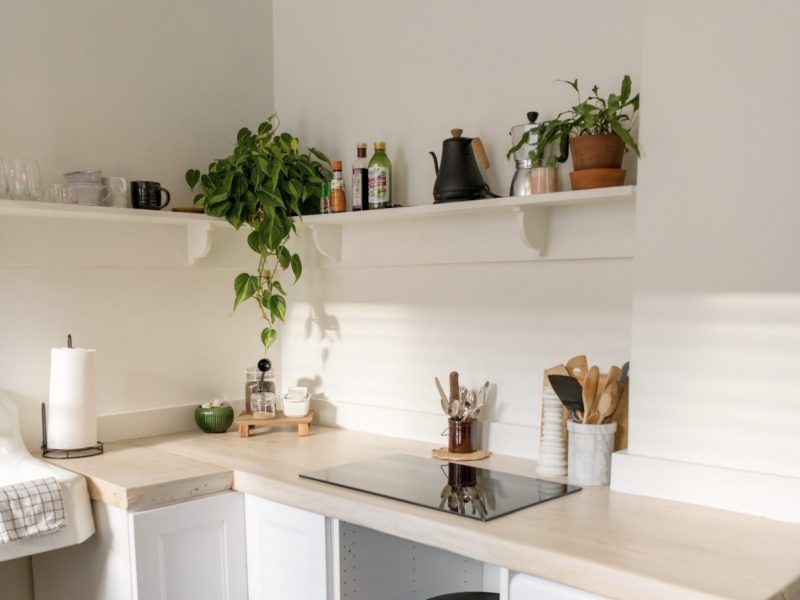
Underwatering is a big concern for plant parents and it can be difficult to know exactly when your plant needs water and how much it needs. Although overwatering can be quite a quick killer of plants, underwatering can also cause real damage and over time plant death (though it will take longer to get there than with overwatering).
In order to treat underwatering properly, it’s important to know the warning signs so that you can diagnose the issue before it’s too late. Below you’ll find the top 5 signs that your plant is being underwatered. A lot of these issues can sometimes be caused by other factors on some houseplant varieties so it’s always important to check the root system to see if it’s dry and crispy and check the potting mix.
The soil is coming away from the pot can indicate underwatering
When the potting mix in the pot becomes really dry for extended periods of time, it can result in the soil pulling away from the sides of the pot. This is because the soil has compacted. When this happens, it can make the issue of underwatering even worse because the water will simply run down the side of the pot and straight out of the drainage holes (when top watering). This means the water bypasses the root system entirely.
To solve this issue you need to start bottom watering as this allows the root system to take up water. We recommend adding water to the saucer/planter every day for a few days and monitoring how quickly the water is taken up. You don’t want to drown the whole plant in water as this can cause it to go into shock and can cause further issues.
In future, to prevent underwatering, it’s important that you adjust your watering schedule to fit with the seasons. Increase your watering during the hottest, sunniest months of the year and cut back during winter. This is because soil dries out a lot faster in hot weather so you need to either be watering more frequently or giving your plant more water each time.
Brown leaves and leaf tips can also indicate underwatering
If you’ve noticed your houseplant starting to develop brown leaves or even just brown patches, spots or brown leaf tips then this can mean your plant is being underwatered. Take a close look at your plant to see if you can spot any other signs of unhappiness that might tell you what is happening. Brown leaves can often be caused by other factors outside of just underwatering so before you go adjusting your watering schedule, confirm the issue by checking the soil and root system.
Underwatering can cause drooping stems and leaves
If your houseplant is looking quite limp and droopy then underwatering may be the cause. If the issue has been going on for a while it will start to dry out the root system, meaning it is unable to bring nutrients, moisture and oxygen to your plant, causing it to droop.
This is one of the earlier signs of underwatering and your plant will usually undroop when it receives some water but you want to act quickly to prevent more long-term damage to your plant.
There are some quite dramatic houseplant types out there that will droop down to tell you that they need water such as a Peace Lily. They will then look totally normal about 30 minutes after watering!
Stunted growth can indicate underwatering
Another sign of underwatering is slow or stagnant growth. This is quite simply because your plant is conserving energy due to a lack of moisture. If this is happening during winter this might not mean underwatering as plants are often dormant during the colder, darker months of the year.
However, if your plant isn’t growing during spring and summer then this might be a sign that it’s not getting enough water. Check the potting mix and inspect the root system. If the problem has been going on for a while then the roots may have dried and crisped up.
Curling leaves can be a sign of underwatering
One of the earlier signs of underwatering is curling leaves as this is one of their ways to save water. Luckily curling leaves are often reversible and means you have caught the problem before it’s caused any irreversible damage like brown leaves or a loss of leaves.
It’s important to note, however, that some houseplant varieties such as the Prayer Plant family naturally curl and uncurl their leaves throughout the day. This can easily be mistaken for an issue such as underwatering so make sure to properly confirm the problem by using a moisture meter or other moisture checking methods. You don’t want to increase how much you are watering your plant if it happens to be natural praying that is causing the curling for example.
Those are the top 5 signs that can be caused by underwatering your houseplants. It definitely won’t cause as many issues as quickly as overwatering does but if the issue goes on for a long time it can cause some permanent damage to your plants and can even kill them.
We recommend getting into a good habit of checking the soil moisture regularly and each time before you water. This helps you understand how quickly the soil is drying out and you should














